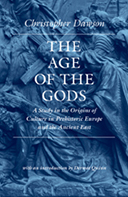Published in America in 1965 and posthumously in England in 1971, The Dividing of Christendom is made up of lectures which Dawson delivered at Harvard between 1958 and 1962 when he occupied the Chair of Roman Catholic Studies there. The lectures covered the period from the breakdown of the medieval unity through the Renaissance and the Reformation right up to the 18th century and the Age of the Enlightenment. Written from the standpoint of an ecumenist who was concerned with religious and cultural unity, the book covers “the historical background and cultural development of Catholic and Protestant society during the centuries of disunity.” Its main thesis is that the division between Catholics and Protestants is mainly cultural in origin rather than theological.
Central Themes
Christopher Dawson saw clearly that the main effect of the Reformation had been to divide the cultural world of Europe into two worlds – “the Protestant North and the Catholic South,” a division that crossed the Atlantic and repeated itself exactly in the northern and southern parts of the American continent. He believed that differences in theology between North and South were far less important than the differences they created in “moral values and psychological antipathies… [for] these differences are harder to surmount than the theological ones, because they go so deep into the unconscious mind and have become a part of the personality and the national character.”
Dawson therefore sought to highlight the similarities between Catholicism and Protestantism in an attempt to heal this disunity. In the first place, there was a common attention to moral reform after the Reformation. Secondly, an interiorization of religion occurred through the mystical movements of the 16th and 17th centuries. Thirdly, in response to the influence of Renaissance culture, the “ideal of a Christian Humanism held a central place in both Catholic and Protestant culture and provided an important link or bridge between them.”
Evaluation of the Work
Divided into sixteen short chapters, The Dividing of Christendom is, in the words of Sunday Telegraph reviewer Nigel Dennis, “an excellent short history of the Reformation and the period shortly before and after it.” The book contains some of those original insights which are so typical of Dawson’s work in general, such as his analysis of the age of Louis XIV “as a specialised form of the Baroque,” but subject to the rules and formulas of classical order. For anyone who wants to understand the different mentalities of North and South, Catholic and Protestant, and has a desire to bridge the gap between them, this book brings clarity and hope.
PRAISE FOR THE ORIGINAL EDITION:
“To some Christopher Dawson may seem to ‘date’ but when truly assessed he is dateless. The principles for which he stood, the truth and beauty that he saw, cannot be lost, even if they may for a time be obscured.” – David Knowles, Regius Professor Emeritus of Modern History, University of Cambridge


